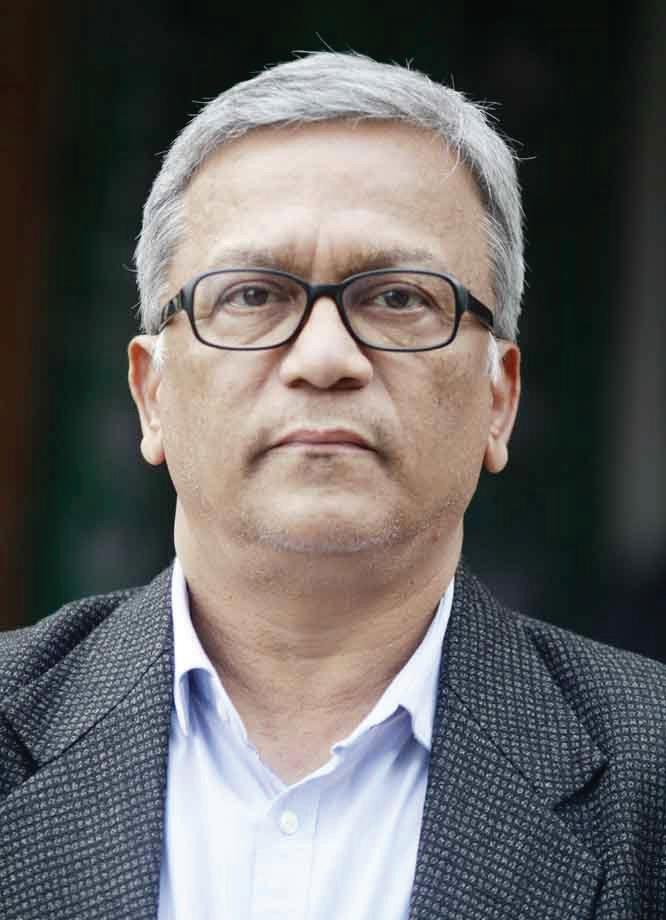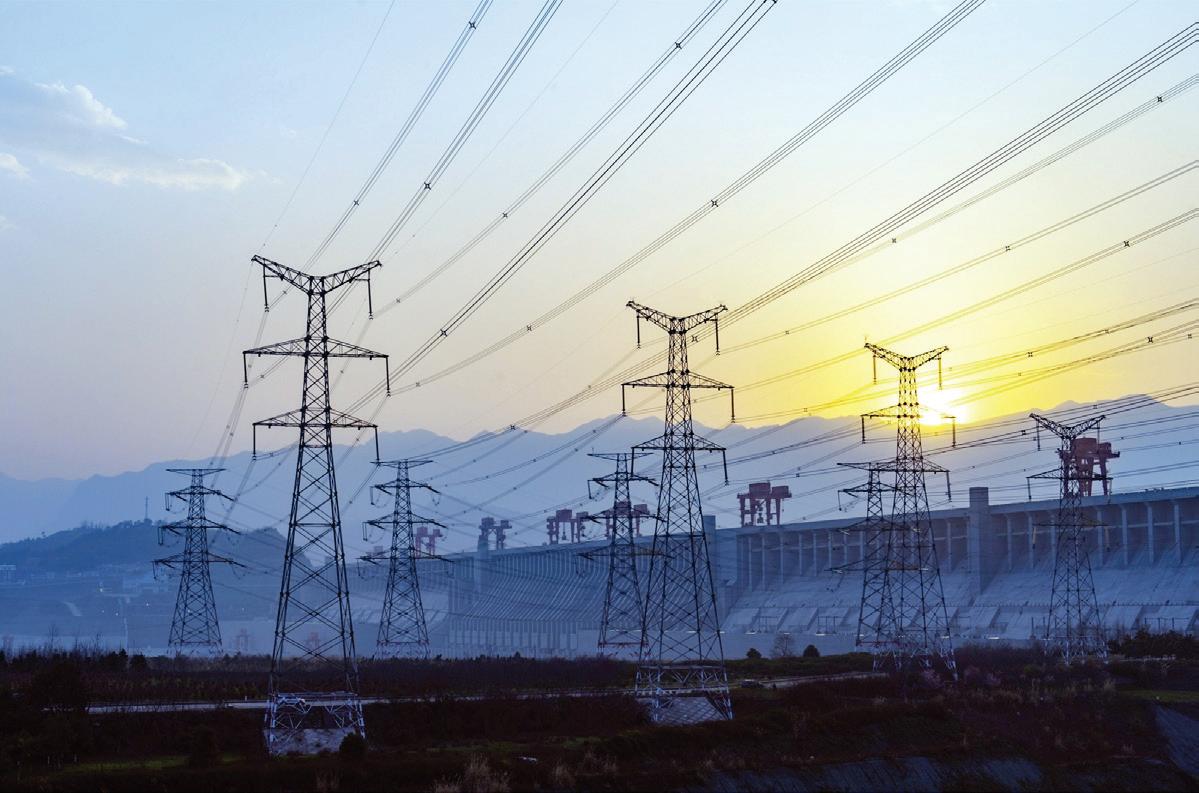INDIA NEWS
Dec 16-31, 2020 - Vol 1, Issue 12
ENERGY & RESOURCES
2nd year in row, India Energy transmission can be valuable revenue for Railways: Report among top 10 high climate performers New Delhi, Dec 7 (IANS): India remained in the top 10 for the second year in a row in this year’s Climate Change Performance Index (CCPI) 2021, occupying rank 10, a report said on December 7. It received high ratings in all CCPI categories, except renewable energy, where it had a medium performance. Under the renewable energy category, India performed medium and high for its current shares of renewable energy and development of renewable energy supply in the last year, respectively. Country experts attribute these positive developments to India’s policy frameworks. They recognised the need, however, for long-term planning. CCPI, published by Germanwatch in cooperation with NewClimate Institute and Climate Action Network (CAN), results show a similar need, as India’s renewable energy uptake and targets scored low and medium, respectively, for their compatibility with a well-below two degrees Celsius trajectory. Unlike China and its BRICS partner South Africa, India has yet to announce its long-term mitigation strategy. This strategy, experts’ advice, should include a post-Covid green recovery plan, including reducing fossil fuel subsidies, phasing out coal, better coordination frameworks between the central and state governments, and raising self-sufficiency by promoting domestic manufacturing in the renewables sector. On India’s engagement in international climate diplomacy, some experts indicated the country’s reluctance to update its NDC, owing to fears of a lack of reciprocity from developed countries. The CCPI 2021 paints a mixed picture of progress by the European Union (EU) on climate action. While the Scandinavian EU countries, Portugal and the EU as a whole rank high on the index with relatively good indicators, Hungary, Poland and the Czech Republic stand out as outliers on climate progress within the bloc. In the overall ranking, the EU has improved from the 22nd place last year to the 16th place this year, almost exclusively thanks to a much better rated climate policy. The CCPI analyses and compares climate protection across 57 Bengaluru, Dec 2 (IANS): Karnataka Chief Minister B S Yeddyurappa on December 2 laid the foundation for a waste-toenergy plant jointly set up by the Karnataka Power Corporation Limited (KPCL) and the Bruhat
www.indianews.com.au
countries (plus EU as a whole) with the highest emissions, which together account for 90 per cent of global emissions. The current index analyses emissions before the coronavirus crisis and does not reflect emissions reduction during this unusual situation. “The latest Climate Change Performance Index clearly shows that the EU stands at a crossroads,” said Jan Burck, one of the authors of the Index, published by his organization Germanwatch. This report comes a few days before the EU summit on the climate targets for 2030 and the UN Climate Ambition Summit to mark the fifth anniversary of the Paris Agreement on December 12. “The EU can become a role model in climate protection with green recovery measures after the coronavirus crisis, by setting an ambitious climate target for 2030 in line with the 1.5 degrees Celsius-limit and a good implementation and further development of its Green Deal. But it can also stumble badly if it pursues greenwashing instead of green recovery and implements inadequate targets and instruments in the European Green Deal,” Burck added. The G20 also presents a split picture. The UK (fifth), India (10th) and the EU score high on the index. The vast majority of G20 countries, however, are trailing in the rankings. The US (61st), Saudi Arabia (60th), Canada (58th), Australia (54th), South Korea (53rd) and Russia (52nd) are all rated “very low”. Once again, the performance of the US is disastrous: The final year under President Donald Trump is the second time in a row that the US is ranked last, below Saudi Arabia. In all four categories except renewable energy (‘low’), the US ends up in the bottom of the table (‘very low’) and is the only country besides Australia and Algeria to receive the worst rating of ‘very low’ both in national and international climate policy. The plans of US presidentelect Joe Biden present great opportunities for this assessment to improve significantly but only if the promises from the election campaign are actually delivered. Given the still unclear majority in the Senate, it is uncertain how much of this will be implemented. Bengaluru Mahanagara Palike (BBMP) in Bidadi on the outskirts of the city. Both BBMP and KPCL will be setting up this plant at an estimated cost of Rs 260 crore, which will be completed in next
New Delhi, Dec 3 (IANS): The Indian Railways should explore the use of sections of its extensive network for electricity transmission infrastructure, according to a report.
This is a key recommendation in the report by the Institute for Energy Economics and Financial Analysis (IEEFA) released on December 3 that outlines the opportunity for the Railways to participate in the nation’s energy transition beyond its solar power generation plans. The report titled, ‘Indian Railways at the Junction’, urges the national transporter to consider the feasibility of locating high voltage direct current (HVDC) lines underground on suitable sections of its right of way. “With its in-house solar project plans, Indian Railways is on track to becoming a major renewable energy generator. And it could further support India’s energy transition by evaluating options for HVDC transmission, which could reduce encroachment on forests and farmland, as well as planning delays,” says
author Charles Worringham, a researcher and guest contributor for the IEEFA.
for Indian Railways --starting with the priorities to deal with a highly congested network.
“Moving latent electricity in the form of coal is less efficient, less flexible, and increasingly less competitive compared to moving actual electricity on transmission lines.”
Prior to the pandemic, 40 per cent of lines and all of the important freight routes were operating at above 100 per cent of line capacity due to severe congestion on the network, but the suspension of passenger services during the pandemic has seen the movement of more freight and a greater diversity of cargoes, at twice the speed, bringing in new revenue and improved service.
Worringham points out that the abrupt changes to railway operations caused by the Covid-19 lockdown and the fall in energy demand growth have highlighted critical choices and opportunities
Gujarat: PM inaugurates 30K MW renewable energy park Gandhinagar, Dec 15 (IANS): Indian Prime Minister Narendra Modi inaugurated the world’s largest renewable solar and wind energy park in Gujarat’s Kutch and another desalination plant, on December 15.
Informing about the development, Chief Minister Vijay Rupani said, “PM arrived in Gujarat on 15th to inaugurate two works.
One was the inauguration of world’s largest renewable energy park with a capacity of 30,000 megawatts (MW) from solar and wind energy. The second programme was the inauguration of desalination plant set up at Mandvi to provide drinking water to the public and industries.”
month ago the Indian PM had visited his home state Gujarat to inaugurate a host of programmes in celebrations of the 145th birth anniversary of the country’s Ironman Sardar Vallabhbhai Patel, at Kevadiya Statue of Unity SoU site, including the Seaplane services from Sabarmati riverfront and Kevadiya colony.
It should be noted that just a
Karnataka CM lays foundation of waste-toenergy plant two years.
The plant will be generating 11.5 MW power, using 600 tonnes of waste per day and the plant will be jointly financed by these agencies. Speaking at the virtual foundation laying ceremony of the waste-toenergy power plant, Yediyurappa said Bengaluru generates 5,000 metric tonnes of waste every day and needed such steps for disposal of scientific waste. “This plant is taken up as part of - Swacch Bharat Mission - as well as - Atma Nirbhar mission. Both of these missions are pet projects of our Prime Minister Narendra Modi. Almost all components used in the plant are indegenious,” he claimed. While the BBMP Commissioner N. Manjunath Prasad said that the plant will be run without any additional financial burden for the BBMP. “This will not only help the BBMP to dispose of waste
facebook.com/indianewsaustralia
scientifically but also save Rs 14 crore avoiding landfill cost,” he added.
The note released by the BBMP claimed that unscientific disposal of waste has resulted in several significant problems. “Groundwater quality has deteriorated due to improper leachate management. Based on the technologies available at present, the BBMP felt that Waste to energy was the best as with this technology large quantities of waste could be disposed off through an incineration method which is most suitable for mixed waste/segregated waste. This is also financially viable method,” the BBMP note added. It is worth noting here, the letter of award for construction of the WTE plant has been awarded to Noida-based ISGEC Heavy Engineering Ltd, along with its consortium partner Hitachi Zosen India Pvt Ltd.
Karnataka Chief Minister B. S. Yeddyurappa “The same consortium is responsible for setting up a WTE plant in Jabalpur in Madhya Pradesh, which has been running successfully for the last four years,” KPCL managing director V. Ponnuraj said. The KPCL clarified in its note that the plant will have indigenous products and equipment. According to this note, the BBMP with an area of 709 square km and with a population of 1.2 crore generates 5,000 metric tonnes garbage per day.
21




















